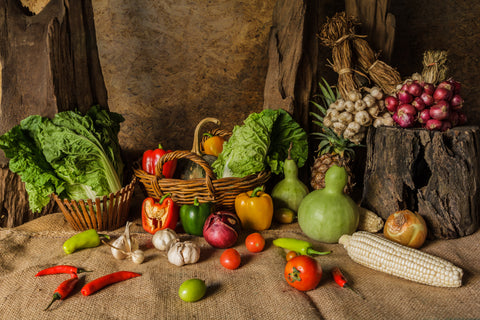5 Kinds of Vegetables That Can Be Grown In the Garden beds in winter
All your hard work in the garden has finally paid off! You can't believe you managed to get the harvest at the end of summer, but what should you do now? Well, it's the official winter. It's time to put these vegetables on the garden beds. Plant one or more vegetables for fresh early spring harvest.
You ask, what can you grow when the temperature is freezing? Look at this list. It lists five vegetables that can still be grown outdoors in winter! With some planning and preparation, you will harvest vegetables in the coldest month. Who says winter must be a root vegetable?

Romaine lettuce
Lettuce is one of the easiest vegetables to grow in cool weather. If you sow in October, you can be ready to harvest lettuce before January. The goal is to plant lettuce six weeks before the last frost date you live.
Dozens of lettuce perform well in winter, although some varieties stand out from others. There are four main groups, including long leaf lettuce, crisp head lettuce, leaf head lettuce and buttered head lettuce. However, leaf varieties are more tolerant of cold than their cousins.
Sow the seeds directly to the garden beds, or if the temperature in your living area is particularly cold, start sowing indoors first. Just make sure your plants have enough sunlight and water, and you will enjoy fresh lettuce all winter long.
Try growing lettuce in a raised garden bed or container.
Carrot
Carrots are another winter vegetable suitable for growing outdoors because they can tolerate colder temperatures (up to 14 degrees Fahrenheit). In fact, the lower the temperature, the sweeter the vegetables. The cold air makes carrots release natural sugar, while protecting them from the cold.
Like lettuce, carrots thrive in sunny and well drained soil. You can sow directly in the garden bed. If the weather in your area becomes very cold, you can cover it with a layer of leaves.
To ensure that your carrots have a long harvest season, stagger the planting time so that you have at least one season of fresh carrots on hand!
Garlic
Garlic is the perfect vegetable to grow outdoors in winter because it requires minimal care and can withstand cold temperatures (0 to 15 degrees Fahrenheit). Garlic, with its pungent taste and numerous health benefits, is a perfect complement to any winter garden.
To start your winter garlic garden, you need to choose a suitable location to receive sufficient sunlight. Select a site with good soil drainage to avoid areas prone to ponding or flooding.
After preparing the garden bed, plant individual garlic cloves in loose soil 3 to 4 inches apart and cover them. Alternatively, you can plant garlic in containers or raised garden beds for easy maintenance. You can plant them in late November.
Once your winter garlic garden is established, the rest is to water regularly and harvest crops in June or July. Enjoy fresh and delicious winter food with home grown garlic, and be assured that you have added this nutritious vegetable to your winter diet!
Leek
Chives are rich vegetables, which are very suitable for growing in the cold winter climate. Unlike other vegetables, leeks do not sleep in winter. On the contrary, they need this time to mature.
To start planting winter chives, you need a sunny place with well drained soil. At the end of autumn, plant the seeds directly into the prepared garden beds and water them regularly. According to your climate, leeks should be ready to harvest about 6 to 7 months after planting.
Not all kinds of chives are the same in cold tolerance. Choose darker leek varieties to ensure they survive at low temperatures (5 degrees Fahrenheit).
Therefore, if you are looking for a simple vegetable suitable for winter to grow outdoors, be sure to try leeks! With a little care and attention, you will soon enjoy fresh winter chives.

Cabbage
Kale is a winter vegetable, which can be covered and planted outdoors in mild winter areas. Its cold resistance makes it an ideal crop for winter gardens. In cold winter, it can help your garden add some color and texture.
First, choose a sunny place in the garden where there is well drained soil. In order to make full use of kale plants, it is important to give them adequate nutrition and water
The goal is to plant kale three months before the first autumn frost. This iron rich vegetable will produce new growth at temperatures above 20 degrees Fahrenheit.
After planting kale seeds, be sure to monitor the progress of the plants regularly Watch out for pests and diseases that can affect the collard cabbage plants - common culprits include aphids, cabbage worms, black rot and beetles.
Kale is in the best state when it matures in frost, and the frost transforms its starch into natural sugar. This process makes it more nutritious and delicious. When the leaf is about the size of your hand, it can be harvested. To harvest kale, just pick a handful of outer leaves from the plant, but try not to pick more than one third of the leaves at a time.
Watch what can be done in winter
Look, winter is about vegetables! There are many delicious choices, and you can still plant them outdoors in winter. With some planning and preparation, you will be able to harvest fresh vegetables in the coldest months.
